The Story of Culture and Arts
- Image resource of Korean history
- Documents from History TextBooks
- Culture & Art Stories from Korean History
- Culture & Art Stories from Korean History - Korean
- National Institute of Korean History
- History net
- About the site
- Introduce
-
Numerous topics related to Korean culture and art are mentioned in middle and high school national history textbooks, but most of them are briefly described by era, making it difficult to understand their concepts, transition processes, and characteristics.
<Culture & Art Stories from Korean History> produces and provides video materials based on expert commentary on the flow, change process, characteristics and characteristics of each major topic in the field of culture and art in Korean history.

Scenario
Storage containers of all shapes and materials, refrigerators to keep our food fresh, and water purifiers that provide us with clean drinking water. Modern kitchens are equipped with an array of appliances to preserve our food.
So where did Koreans of the past store their food if they didn't have all this? Where did they store their water?
Earthenware pottery handled all of that. These large pots might only be used for sauces and pastes today, but in the past, nothing could be done without them. Earthenware was used for many things, from crocks that preserved fermented foods to jars and braziers for steaming and cooking.
The Fundamentals of Earthenware
‘Old records state that chestnuts were available even in the summer. This was possible by storing them in earthenware crocks buried in the ground where they could be kept for years.’ - Xu Jing, Xuanhe fengshi gaoli tujing (Xuanhe Commissioner’s Illustrated Account of Goryeo), Vol 23
Earthenware is called “togi” or “dogi” in Korean, clay pottery fired below 1,200 degrees Celsius. Earthenware was very useful since it was made of readily available materials and didn’t require glazing. Grains and cooking ingredients could be preserved in earthenware crocks for long periods of time without spoiling. This is due to the porous nature it takes on when fired at 1,200 degrees Celsius. Microscopic holes on the surface of the pottery, which only allow air-sized particles to pass through, let the pot breathe, which in turn keeps food fresher for longer.
It is said that the kimchi refrigerators we use today owe something to these earthenware vessels. Ground temperature hovers at 0-1 degree in the winter. When buried, the large kimchi jars are cooled to that temperature. This provides optimal conditions for preserving and fermenting the kimchi. Modern kimchi refrigerators implement this principle by maintaining that 0-degree temperature to give us the kimchi taste we all know and love.
The Story of Goryeo Earthenware
‘As a general rule, if a ship is to traverse large bodies of water, it must prepare and carry plenty of fresh water for drinking and cooking. In the middle of the ocean, wind is of no concern. But having or not having water is the difference between life and death.’ - Xu Jing, Xuanhe fengshi gaoli tujing, (Xuanhe Commissioner’s Illustrated Account of Goryeo), Vol 33
For premodern seafarers on long voyages, the most important thing was having enough drinking water. Large earthenware pots nearly one meter tall were found among the Goryeo-period wreckage. Sailors of the past used these jars to store water for drinking and other on-board uses. Archaeologists also found large pots for storing grain, ceramic steamers, as well as pots used to hold various foodstuffs.
A group of shipwrecks discovered off the coast of Mado, Taean-gun in Chungcheongnam-do. Referred to as the “Mado ships,” these 13th-century Goryeo vessels sank en route to the capital transporting regional products as tax payments. The artifacts recovered from these ships not only revealed the items the sailors used daily, but also clues to how Goryeo earthenware was used, something not previously known.
Wooden tablets and bamboo tags used for the ship’s manifest. Found during the salvaging process, they stated not only the ships’ origin and destination, information about the recipient, but also details regarding the contents of the pots and their quantities, such as “five pots of salted mussels” and “one pot of salted crabs”. Near the wooden tablets were salvaged pots containing clam shells, crab shells, and rice grains. Through these findings, we learned that the pots were used as containers for transport. Furthermore, we were able to deduce that these shipping pots followed their own volume standards system.
Joseon Period Earthenware
‘Each side has ears to grab. Once they fall, they break and become useless, but they are the most important thing in our lives.’ - Seo Yugu, Imwon Gyeongjeji (Sixteen Treatises Written in Retirement)
Earthenware was a major part of people’s lives in the Goryeo period and well into the Joseon period.
They are often featured in Joseon-period folk paintings of everyday life. Did you notice all the earthenware pottery in the paintings? The brazier in front of the hat and brush makers, a large jar filled with indigo dye, and another being filled from a well.
Then did the Joseon court also use earthenware pottery? Among the Joseon paintings depicting palace life, we find images of large earthenware jugs beside the busy court cooks. For the lavish meals required for royal events and ceremonies, obtaining earthenware to store drinking water and food was a constant issue. That is why it is said that the royal kitchen and the various government offices in charge of court events were staffed with 104 pottery artisans to handle the large volume of orders.
The painting “The Eastern Palace” depicts the royal sauce jar warehouses between Changdeokgung and Changdeokgung palaces. Here, we can see the Eastern palaces’ four sauce jar warehouses. It is clear these sauce jar warehouses are fairly large. There were also two on the east side of Gyeongbokgung palace, hamhwadang and jibgyeongdang. Following the 2005 excavations of Geongbokgung palace, a sauce jar warehouse was recreated in the west wing with large jars collected from around the country.
Epilogue
‘Looking at these items, I feel like reading about Korea’s national history and actually speaking with the people of the past.’ - Asakawa Takumi(淺川巧), Chōsen tōjimei kō (Catalog of Korean Ceramics), 1931
Earthenware has been used in every time period by all classes, tracing back to the Neolithic period 8,000 years ago. When humans first discovered that clay hardened when fired, they began molding it into earthenware pottery. From then on, earthenware was used for all aspects of life, from daily necessities to burial objects for the dead. Earthenware, crude and unrefined but does its job and is stronger than all else. Let us instead think of those jars as vessels holding the history of a people.
Fine Arts & Crafts
18 films-
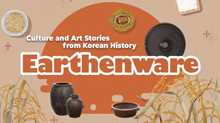 Earthenware08:28
Earthenware08:28 -
 Taenghwa, or Buddhist Paintings in the Joseon Period08:36
Taenghwa, or Buddhist Paintings in the Joseon Period08:36 -
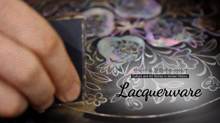 Lacquerware09:04
Lacquerware09:04 -
 Dyeing and Weaving08:21
Dyeing and Weaving08:21 -
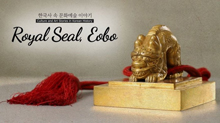 Royal Seal, Eobo07:53
Royal Seal, Eobo07:53 -
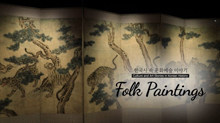 Folk paintings07:49
Folk paintings07:49 -
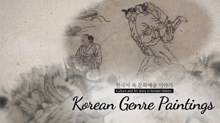 Korean Genre Paintings10:05
Korean Genre Paintings10:05 -
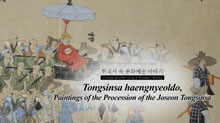 Paintings of the Procession of the Joseon Tongsinsa10:09
Paintings of the Procession of the Joseon Tongsinsa10:09 -
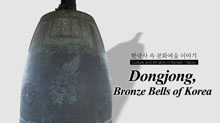 Dongjong, Bronze Bells of Korea08:50
Dongjong, Bronze Bells of Korea08:50 -
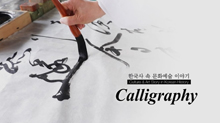 Calligraphy08:32
Calligraphy08:32 -
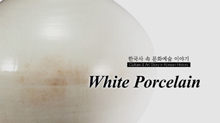 White Porcelain08:18
White Porcelain08:18 -
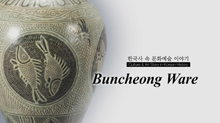 Buncheong Ware07:48
Buncheong Ware07:48 -
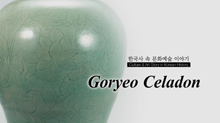 Goryeo Celadon07:54
Goryeo Celadon07:54 -
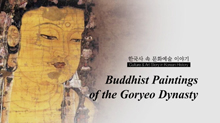 Buddhist Paintings of the Goryeo Dynasty07:57
Buddhist Paintings of the Goryeo Dynasty07:57 -
 Clay Figures, Figurines07:01
Clay Figures, Figurines07:01 -
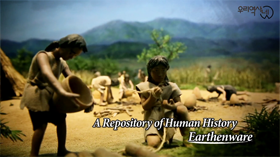 Clay Earthenware06:05
Clay Earthenware06:05 -
 Paintings of the Joseon Dynasty08:09
Paintings of the Joseon Dynasty08:09 -
 Statues of the Buddha in Korea09:03
Statues of the Buddha in Korea09:03

